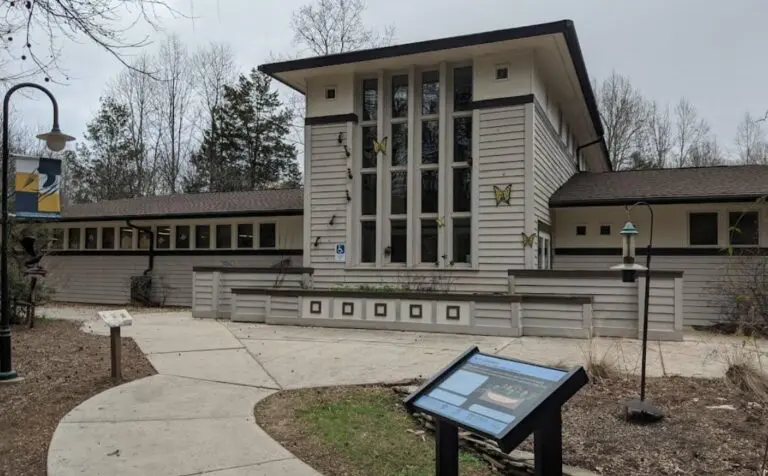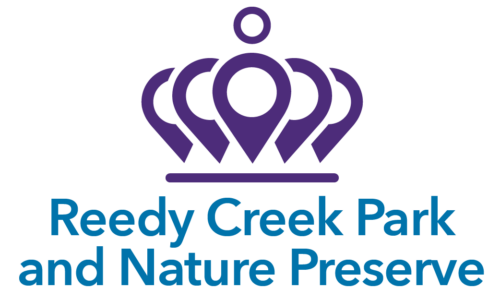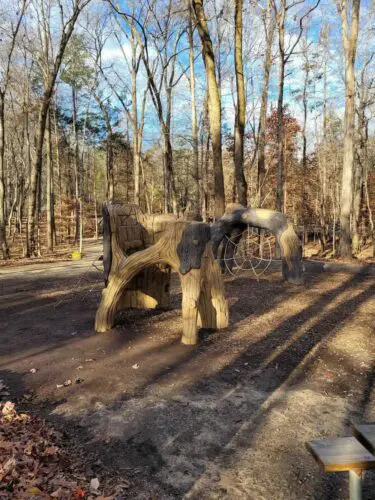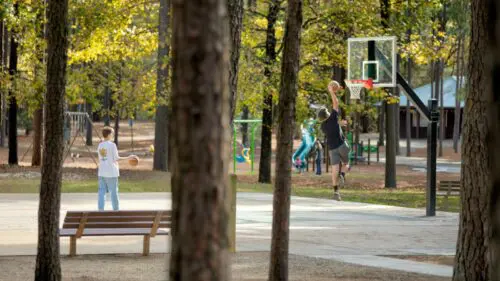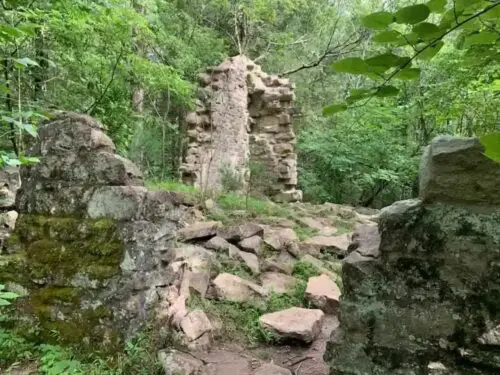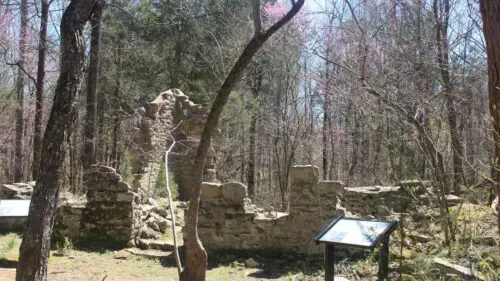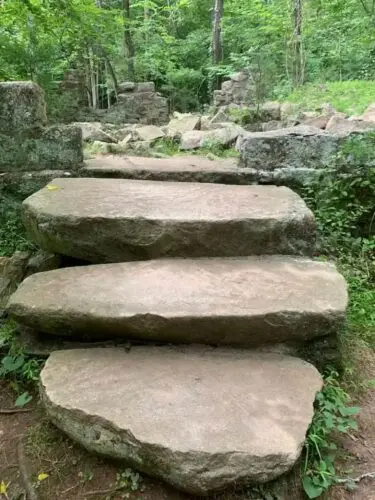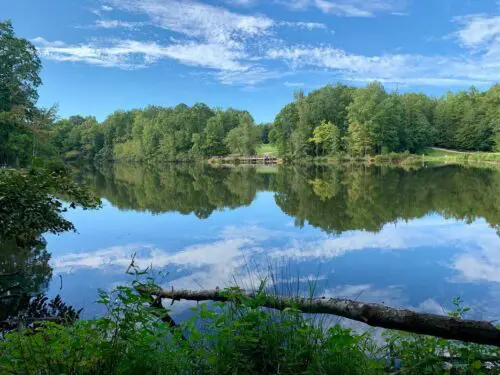Reedy Creek Park and Nature Preserve is Mecklenburg County’s third-largest nature preserve. It is 1,036 acres of land, of which 920 are protected. Mecklenburg County has set aside nearly 8,000 acres of park land to conserve its highest quality rare species habitats, grasslands, forests, wetlands, and water quality.
Reedy Creek Park and Nature Preserve are named after Reedy Creek, which runs through the preserve. The City of Charlotte purchased the land for the park in 1981, and the park was officially opened in 1985. In 1991, land ownership was passed to Mecklenburg County’s Parks and Recreation Department. Today, visitors can also enjoy picnic shelters, a dog park, a fishing pier, athletic fields and courts, and playgrounds.
Humans have occupied the area of Reedy Creek since the Woodland Period (1000 B.C.E. to 1600 A.D.). The Catawba are believed to have settled in the region in 1567. In 1729, North Carolina became a colony, and the land that became Reedy Creek Park and Nature Preserve was originally part of a 100,000-acre land patent owned by King George. Between 1745 and 1767, King George passed out land grants to farmers to help bring more European settlers into the area. Grants would often go to squatters who were already living on the land.
One of the most significant finds at Reedy Creek Park and Nature Preserve was the discovery of the ruins of the Robinson Rock House in the winter of 1981. The Robinson Rock House was built on tracts of land owned by George Selwyn and King George III. Selwyn’s tract of land was 212 acres, and King George III’s was 200 acres. The two tracts of land ended up in the hands of Robert Robinson, Sr.; he divided all of the land between his two sons, Robert Robinson, Jr., and John Robinson. John Robinson’s portion of the land contained the rock house, which was likely constructed between 1780 and 1810.
John Robinson received the land from his father in 1783. From 1783 until 1854, ownership of the land was unknown. Matthew Wallace willed the land to his son, Albert Wallace, in 1854. When Matthew Wallace owned the Rock House, it was part of a large plantation, where roughly 100 people were enslaved; there are still slave quarters on the grounds. In 1862, 75.5 acres of the rock house were sold to Wesley Griffin.
The land then passed to Robert Simpson, who sold the land to George Jordan in 1871. Jordan and his wife Evelyn were the last to live in the stone home. The Jordan children sold the property to NW Wallace, a local county sheriff. The house fell into disrepair during Wallace’s ownership. When Wallace died in 1928, the property was purchased by Joseph and Beulah Grier. In 1978, Joesph W. Grier owned the land and was the last private owner, as the City purchased the land in 1979.
In 1981, archeologist Bill Fischer and historian Bill Huffman worked to rehabilitate the rock house ruins so the public could interact with them. Huffman tracked down the grandson of George Jordan, who explained the layout of the home. Before it was rediscovered, humans hadn’t disturbed the home since 1899. Fischer and Huffman stabilized the ruins and added informational signs to explain the space to visitors. The Robinson Rock House was opened to the public in 1986.
Outside the Robinson Rock House, Reedy Creek Park and Nature Preserve also includes Reedy Creek Nature Center. The nature center is in the middle of the park and preserve. It has a gift shop, a bird viewing area, an exhibit hall with live animals, a backyard habitat, and public and private education programs. The preserve has three ponds: Dragonfly Pond, Kingfisher Pond, Slider Pond, and over 10 miles of hiking trails. While hiking, you may see over 109 species of birds, 15 species of mammals, 12 species of reptiles, and 20 species of reptiles that call the park and nature preserve home. Birding is quite popular at the space as they offer birding classes, feedings, and events like the Hummingbird Festival where visitors can see not only hummingbirds but Broad-winged Hawks and Scarlet Tanagers.


